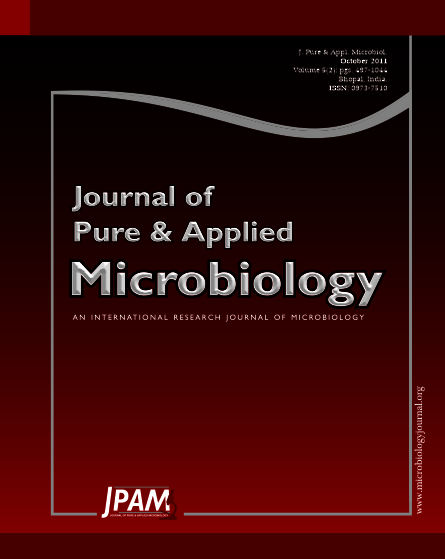Aqueous leaf extract of Acorus calamus L. (A. calamus) alone and its combination with bulb extract of Allium sativum L. (A. sativum) were evaluated for their antifungal activity against three phytopathogenic strains of fungi namely Alternaria alternata Fr. Keissl. (A.alternata), Aspergillus flavus Link. (A.flavus), and Fusarium solani F. sp. Pisi. (F.solani) using poisoned food technique at different concentrations (conc.) (5%, 10%, 15% and 20%). Aqueous leaf extract of A. calamus alone was found to be most effective in inhibition against A. alternata , followed by F. solani and A. flavus. Aqueous leaf extract of A.calamus in combination with bulb extract of A. sativum, was found to be most effective in inhibition against F. solani , followed by A. alternata , and against A. flavus . Aqueous leaf extract of A. calamus alone was found to be fungistatic against all three test phytopathogenic fungi. Combination of aqueous leaf extract of A. calamus and bulb extract of A. sativum also found to be fungistatic againt all three pathogenic fungi except F. solani, against which it was found to be fungicidal at 20% conc. Both aqueous leaf extract of A. calamus alone as well as its combination with bulb extract of A. sativum were found to have broad fungitoxic spectrum. Present study forms basis for its further evaluation under field conditions as a biofungicide.
Leaf extract, Fungicides, Antifungal, Fungitoxic spectrum
© The Author(s) 2011. Open Access. This article is distributed under the terms of the Creative Commons Attribution 4.0 International License which permits unrestricted use, sharing, distribution, and reproduction in any medium, provided you give appropriate credit to the original author(s) and the source, provide a link to the Creative Commons license, and indicate if changes were made.


